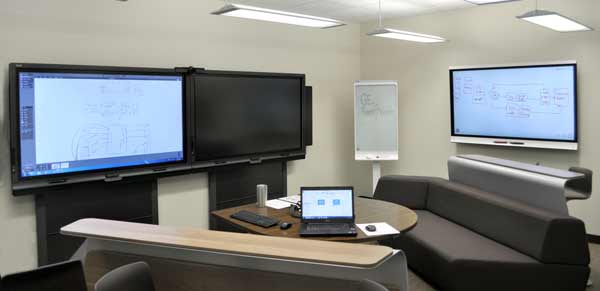What does audio and visual systems integration look like?
What immediately sets AV integration apart is how holistic it is. The integration process brings various technologies and teams together in the pursuit of a single goal – designing and implementing an AV solution that solves the client’s needs. This is how AV integrators accomplish that goal:1. Needs analysis – The first step in developing an AV solution is detailing the client’s needs. Every client has a different set of goals, whether it’s to bring in additional customers, passively sell or upsell products, strengthen a brand, provide for more responsive internal communications or communicate better with other campuses or partners.
The integrator will consult with their client during the needs analysis, and will use the client’s input to better design the solution. A needs analysis is also helpful for ensuring the integrator and client are looking at the project from the same angle. By the time the consultation is over, both the integrator and client should know the project’s milestones, scope, budget, potential obstacles and expected completion date.
2. Site survey – The site survey is often done in conjunction with the needs analysis consultation. Site surveys should be considered mandatory, as they reveal any lurking or potential obstacles. For example, if existing network cabling has deteriorated over the years, the integrator will need to pull it before installing anything. If complications like these are spotted early, they can be addressed without delaying the project.
3. System design – Once a solution is proposed by the integrator and accepted by the client, the integrator will go to work designing the system. AV designers will assess and select all technology before it is purposed, prioritizing elements like intercompatibility. The designer will also diagram equipment placement so that installers know exactly where everything belongs.
4. Collaborate with build teams – Not all AV projects involve new construction, but many do, and when construction is present, that means AV integrators must be willing to work with multiple build teams. Integrators will work with electricians to ensure the system gets the power it needs, with IT to ensure the system is properly networked, and with the general contractor for any aesthetic or structural concerns. The integrator may collaborate with the furniture manufacturer for the purposes of integrating AV equipment.
An integrator needs communication skills, professionalism and a cooperative mindset to make the solution seamless, so all are valuable traits to look for in an AV expert.
5. Install and program – The integrator’s installers will take over from the design team once the system has been planned out. During installation, the integrator’s install team will position the equipment according to the designer’s layout. If additional challenges emerge during integration, the installers will work with the project manager to devise a solution.
The equipment is programmed after it is installed, and it is programmed to the client’s needs. When programming a control system, for example, the integrator can set up useful presets and define privileges for different departments. This minimizes the chances of someone accidentally reconfiguring the system.



